Consider an X and Y relationship where, for a change in the unit system in X and Y, the numerical relationship does not change.
How can I plot this relationship in both unit systems on the same plot? (i.e. show two X axis and two Y axis for the same single plot, as opposed to showing this relationship in two separate plots)
In my particular case, I have the following two plots. The one on the right simply renders the same data normalized to represent percentages of the total quantities involved.
Here is an example :
import numpy as np
import matplotlib.pyplot as plt
ar = np.array([80, 64, 82, 72, 9, 35, 94, 58, 19, 41, 42, 18, 29, 46, 60, 14, 38,
19, 20, 34, 59, 64, 46, 39, 24, 36, 86, 64, 39, 15, 76, 93, 54, 14,
52, 25, 14, 4, 51, 55, 16, 32, 14, 46, 41, 40, 1, 2, 84, 61, 13,
26, 60, 76, 22, 77, 50, 7, 83, 4, 42, 71, 23, 56, 41, 35, 37, 86,
3, 95, 76, 37, 40, 53, 36, 24, 97, 89, 58, 63, 69, 24, 23, 95, 7,
55, 33, 42, 54, 92, 87, 37, 99, 71, 53, 71, 79, 15, 52, 37])
ar[::-1].sort()
y = np.cumsum(ar).astype("float32")
# Normalize to a percentage
y /=y.max()
y *=100.
# Prepend a 0 to y as zero stores have zero items
y = np.hstack((0,y))
# Get cumulative percentage of stores
x = np.linspace(0,100,y.size)
# Plot the normalized chart (the one on the right)
f, ax = plt.subplots(figsize=(3,3))
ax.plot(x,y)
# Plot the unnormalized chart (the one on the left)
f, ax = plt.subplots(figsize=(3,3))
ax.plot(x*len(ar), y*np.sum(ar))


References:
- This thread discusses how to plot multiple axes on the same plot.
- This thread shows how to get the Lorenz plot, which is what these plots represent, given the input array
ar.

